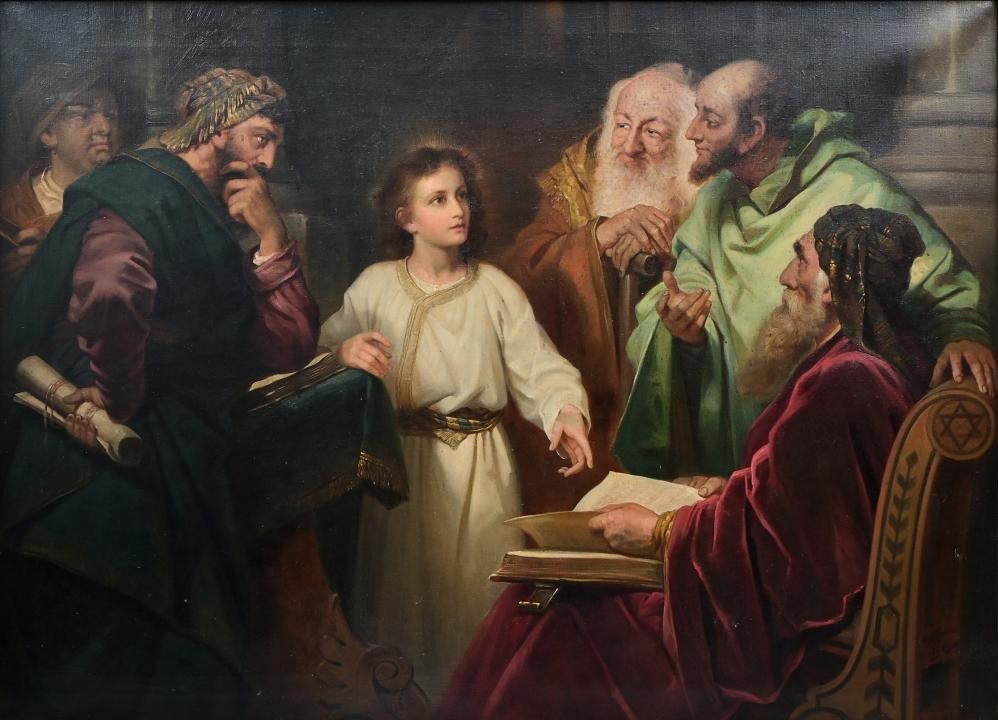Cantata 154, for the first Sunday after Epiphany, was performed in 1724 and also much later in 1736. Scholars believe that it may have originated, at least partially, in Weimar, although there is no conclusive evidence to back this up.
The Gospel for this Sunday is Luke 2: 41-52. It narrates the story of the twelve-year-old Jesus staying behind in Jerusalem while his parents thought he was with their group traveling back to Nazareth. Mary and Joseph’s anxious search is resignified by the unknown librettist from the point of view of the believer searching for Jesus. The libretto includes two chorales (movement 3 by Martin Jahn, and the closing movement by Christian Keymann) and a dictum inserted as movement 5 from the Gospel of Luke, chapter 2 verse 49.
The scoring is simple, supporting the theory of the cantata’s Weimar origins: 2 oboes d’amore, strings, continuo, 4 voices and continuo. It is a “solo” cantata, meaning that there isn’t a choral movement besides the chorales, which can be sung by the ensemble of soloists.
The first movement, an aria for tenor and strings, creates a tentative, hesitant atmosphere using dotted rhythms and long appoggiaturas on the strings and the voice, and an ostinato bass line in quarters with regular rests in the middle of each bar. The bass line is notable for its apparent lack of harmonic direction, contributing to the idea of an erratic, disoriented search for Jesus. Bach uses powerful word-painting on “Donnerwort” with repeated sixteenths on the strings against the voice.
A tenor “secco” recitative follows, continuing to express angst over the missing Jesus. It leads to the Martin Jahn chorale, set for the four solo voices with instruments doubling. This chorale was used by Bach in a couple of other instances, including the St. Matthew Passion.
The next aria switches from personal musings to a prayer in the second person, addressed at Jesus. It’s set for the alto, accompanied by the two oboes d’amore and supported by a unison of the two violins and viola, in octaves with a figured basso continuo line for the harpsichord. This is reminiscent of the “bassetto” technique, although the latter would dispense with the continuo line altogether. This arrangement creates a sense of weightlessness, continuing to build on the uncertain and confused mood of the libretto so far.
At this point we encounter the dictum from the Gospel of Luke, in the voice of Jesus, which is per usual given by Bach to the bass in the form of an arioso. This moment serves as the inflexion point of the cantata, turning the mood from despair into hope as articulated by the tenor in the long, descriptive recitative that follows.
With the mood now bright and cheery, the aria that follows is an animated duet for the alto and tenor in quadruple meter, accompanied by strings (with the oboes doubling the violins) and basso continuo. The voices move mostly together in congenial thirds and sixths, illustrating the idea of the reunion between Jesus and the believer. The instruments punctuate the vocal phrases with animated, jumpy motifs in sixteenths. When the aria expresses the vow to never let go of Jesus, the meter turns to triple for a dance-like quality, and the voices chase one another canonically. The instrumental ritornello comes back with the original material to close the movement.
The cantata ends with the Keymann chorale, semantically connected to the previous duet (“I will not let go of my Jesus”). It’s set in four-part harmony on a constantly moving bass line in eighths, possibly a representation of a determined vow of the believer to remain close to Jesus.
